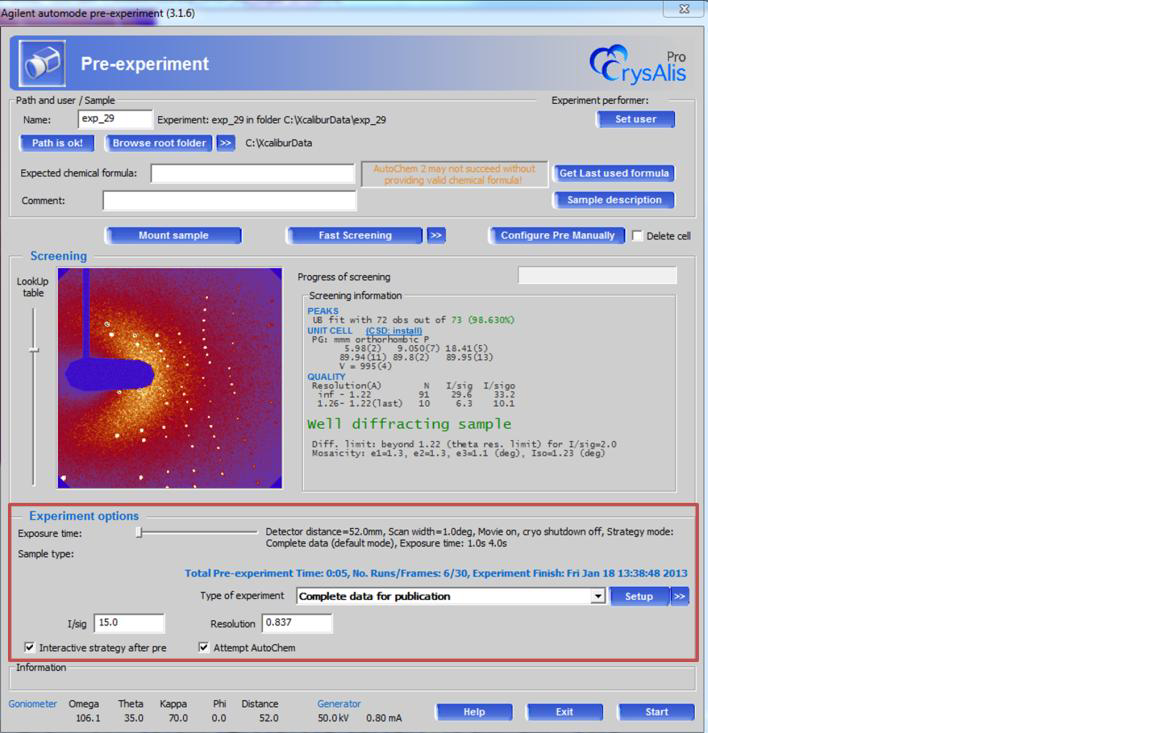

Use the Mark Rings tool and click 3 points on a ring to mark it. Use the Zoom tool to make the rings larger: Open a TEM ring pattern using Pattern -> Open. Used to set the Accelerating Voltage, Camera length and Resolution of the patternĬalculation the resolution of the pattern by comparing up to 4 marked ring with know d-spacings.
#Singlecrystal software dm3 file windows#
dm3 fileĮxits the program and closes all profile and ring figure windows Removes marks made on the figure one by one Opens the profile screen with the calculated pattern profile emf doesn't work)Ĭlick 3-ponts on a ring to measure the d-spacing and mark the centerĬlick 2-points to measure the distance in d-space Left-click and drag makes zoom-in box/Right-click and drag makes zoom-out boxĪdjust the space on the outside of the figure axes Button Left-click and drag pans the pattern/Right-click and drag zooms the pattern Crystallographic Nexus Software Library on CD-ROM, School of Crystallography, Birkbeck University of London, Malet Street, WC1E 7HX, London, UK, E-mail: WWW. (Secretary), EPSRC-funded Collaborative Computational Project Number 14 for Single Crystal and Powder Diffraction (CCP14), School of Crystallography, Birkbeck University of London, Malet Street, WC1E 7HX, London, UK. The preferred way to cite SingleCrystal software is: The current version for Windows and MacOSX operating systems can be downloaded from this link.
#Singlecrystal software dm3 file free#
SingleCrystal Software is distributed as a free software. With CrystalMaker’s “Live Rotation Mode” enabled, rotating the crystal causes its diffraction pattern to rotate – and vice versa. The two programs can be linked, letting you view a crystal structure in one window, and its diffraction pattern in another.

SingleCrystal 3 is designed to work with CrystalMaker X, reading from saved crystal files to simulate diffraction properties. You can also copy or export graphics and stereographic projections in either pixel- or vector-based formats. Diffraction patterns (including background pictures and measurements) can be printed at high resolution. You can also export diffraction data listings and “Zone Axes” files – useful for indexing observed patterns. SingleCrystal lets you save your work in a self-contained session file, ready for instant display next time you use the program. SingleCrystal can even display symmetry-related poles and traces. The stereogram shows the angular positions of plane normals or lattice vectors (zone axes) plotted as poles and optionally as great circle traces – and is fully customizable. To help you navigate through diffraction space, you can take advantage of a live stereographic projection (“stereogram”) which can be displayed on the right-hand side of each diffraction window. With the Grid tool, auto-indexing is a breeze: just position the grid points over your observed pattern (TEM or Precession photos) and let SingleCrystal calculate the best-fit orientation and index your diffraction spots. Simulated patterns can be superimposed above observed patterns, for direct comparison. Use the translucent Ruler, Protractor and Grid overlays to measure your pattern and copy the results to the clipboard. You can use SingleCrystal as a virtual lightbox: just drag-and-drop a diffraction image into any window, zoom in to examine fine details, move or rotate the image.

Other controls allow you to change the scale (camera constant), saturation, sample thickness, wavelength and other parameters. Precise tilts can be entered, or you can define a view direction as a plane normal or lattice vector. SingleCrystal lets you rotate your (virtual) crystal in real time, using multi-touch gestures (Mac), by clicking-and-dragging with the mouse, clicking toolbar “tilt” controls, or using the keyboard.

You can edit lattice parameters and site occupancies – and opt to exclude certain sites from the diffraction calculation. Diffraction- and structural data can be browsed and sorted on screen. You can colour-code your patterns by intensity, wavelength, or even phase angle. SingleCrystal can label reflexions, show systematic absences, and lets you measure distances and angles between diffraction spots. Once the intensity calculation is complete, diffraction patterns can be rotated in real time using the mouse or multi-touch gestures on the trackpad. SingleCrystal 3’s multi-core architecture dramatically accelerates simulation times for massive structures such as proteins. Reciprocal lattice sections can also be visualized, with control over layer height. SingleCrystal provides simulation of key diffraction techniques – Laue, Precession & transmission electron diffraction – with control over sample and instrumental parameters.


 0 kommentar(er)
0 kommentar(er)
